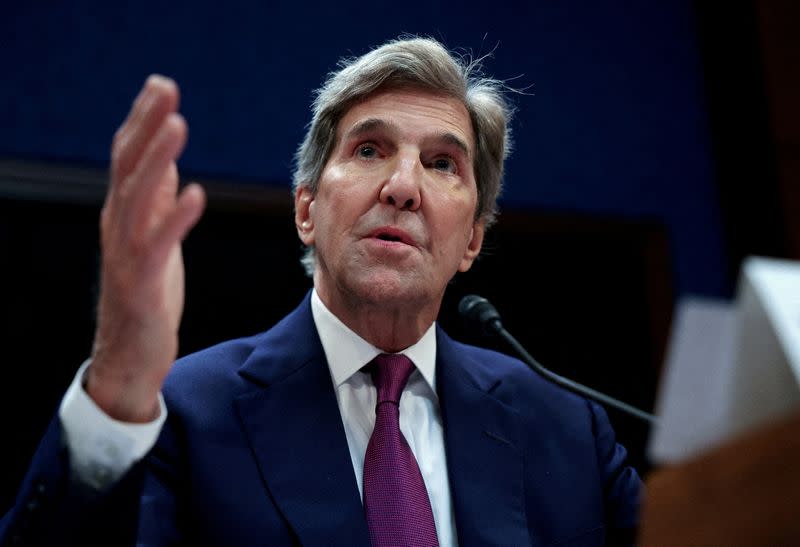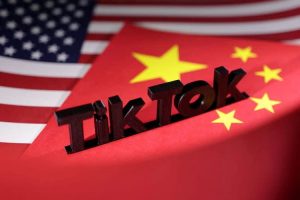US climate envoy John Kerry flies into Beijing today (Sunday July 16) at a time when the world, and China, desperately need answers to the global warming crisis.
Beijing has just seen some of its hottest days in seven decades, while America has also been battered by a heatwave that also saw temperatures well over 40 Celsius, plus extreme weather in the northeast.
China generates nearly a third of the world’s fossil fuel emissions, with daily emissions still increasing – averaging nearly 31 million tonnes of CO2 a day, despite massive expansion of solar and wind power sources this year.
A key issue appears to be China’s sluggish reform of its power grid, so that increasing amounts of renewable energy can be integrated on the country’s electricity grid.
Meanwhile, the US has been the single biggest cumulative emitter since 1751, generating about 25% of the global total – equivalent to all of Asia, according to one source, but has now reduced its output to about half that amount.
With the passing of the Inflation Reduction Act last year, the US is rapidly ramping up its shift to renewables, like many countries in Europe and other parts of the world.
ALSO SEE: Fast Debt Deals, Climate Funds Needed for Poor States: Yellen
The United States and China will look to revive efforts to combat global warming this week, in bilateral meetings that observers hope will raise the bar on ambitions ahead of UN-sponsored climate talks in late 2023.
The talks follow two other high-level US visits to China this year, as the world’s largest greenhouse gas emitters work to stabilise a relationship strained by trade disputes, military tensions and accusations of spying.
John Kerry will join bilateral talks with his Chinese counterpart Xie Zhenhua in Beijing over the next three days that will focus on issues including reducing methane emissions, limiting coal use, curbing deforestation and helping poor countries address climate change.
The pair, who have cultivated a warm relationship over more than two decades of diplomacy, will also likely discuss China’s objections to US tariffs and other restrictions on imports of Chinese solar panel and battery components, observers say.
Washington is seeking to protect US manufacturers from low-cost competitors in China, including those it suspects of using forced labour, which Beijing denies.
Low expectations
“I wouldn’t look for breakthroughs in these meetings but my hope is that they restore normal alignment and diplomacy,” said David Sandalow, director of the US-China program at the Center on Global Energy Policy.
Kerry addressed his objectives for the China trip at a House foreign relations subcommittee hearing on Thursday, saying: “What we’re trying to achieve now is really to establish some stability with the relationship without conceding anything.”
Republicans have accused the Biden administration of being too soft on Beijing in climate diplomacy, arguing that China continues to increase its greenhouse gas emissions while the United States imposes costly measures to clean up.
Kerry is the third US official after Secretary of State Antony Blinken and Treasury Secretary Janet Yellen to visit China this year to try to reestablish a stable bilateral relationship.
Both countries say they should be able to collaborate on climate change regardless of other disagreements.
Li Shuo from Greenpeace in Beijing said the scheduled talks showed climate change “is still the touchstone for the most important bilateral relationship of the world.”
“Regardless of their political differences, the impacts of climate change have now become a common experience for both countries — it’s no longer a hypothetical crisis or analytical challenge, but a living reality that can be felt through the skin,” he told CNN.
Boost for global efforts
Talks between the US and China have a history of boosting global climate negotiations, including setting the foundation for the Paris climate accord in 2015, when governments agreed to limit the industrial-era rise in global temperatures to 1.5C.
But broader tensions have chilled the relationship since, including Trump-era tariffs on Chinese goods including solar panels, the visit of former US House Speaker Nancy Pelosi to Taiwan last year, and a US law blocking imports of goods from the Xinjiang region where Washington believes China uses forced labour.
After Pelosi’s August trip to Taiwan, a democratically-governed island that China claims as part of its territory, Beijing said it would halt all dialogue with Washington on climate change. The two countries only resumed informal climate talks in November at the COP27 summit in Egypt.
US passage of the sweeping Inflation Reduction Act, whose tax credits for domestic clean energy production seek to counter China’s dominance in the sector and revive US manufacturing, have also ramped up tensions.
And while China has added more renewable energy than the rest of the world combined, it has also made a strong foray back to coal – a major concern for Washington.
In 2022, China issued its highest number of new permits for coal plants since 2015, according to the Centre for Research on Energy and Clean Air (CREA) and the Energy Monitor.
“While the US will raise the issue of halting development of new coal generation, it seems unlikely that China will give any assurances on this issue,” said Alden Meyer, a Senior Associate at the E3G think tank and long-time climate negotiations observer.
“And while China will likely raise the issue of US tariffs on Chinese solar technology, it is unlikely that the US will announce any changes on that front,” he said.
During Yellen’s visit last month, she made a public push to get China to participate in the UN-run funds to help poorer nations address climate change. China, which considers itself a developing nation, has resisted.
Fang Li, China director at the World Resources Institute, said she also expects the United States to push China to strengthen its national climate pledge under the Paris agreement but may face reluctance from a Chinese side irked by US trade barriers.
- Reuters with additional editing by Jim Pollard
ALSO SEE:
US Senate Panel Backs Move to Strip China of ‘Developing’ Status
China Set to Install 100 GW of Solar Power This Year – PV Mag
Global Warming Set to Break 1.5C Tipping Point by 2027
India’s Power Play to Become a Global Solar Force – Hindu
























